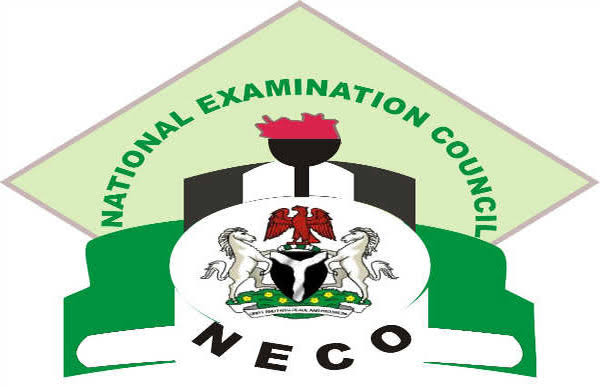NECO Biology Practical Questions and Answers
The National Examinations Council (NECO) is a public examination body in Nigeria that conducts examinations for secondary school students. One of the subjects that NECO offers is Biology, and the practical examination is a significant part of the overall score.
In this blog article, we will discuss the NECO Biology practical examination in detail. We will cover the different types of questions that are asked, the expected answers, and how to prepare for the exam.
We will also provide a list of FAQs about the NECO Biology practical examination.
Types of Questions
The NECO Biology practical examination typically consists of three types of questions:
-
Observational questions: These questions require you to observe a specimen and answer questions about its features.
-
Identification questions: These questions require you to identify a specimen based on its features.
-
Experimental questions: These questions require you to conduct an experiment and answer questions about the results.
Expected Answers
The expected answers to the NECO Biology practical examination questions are typically based on the NECO Biology syllabus. You can find the syllabus on the NECO website.
How to Prepare
The best way to prepare for the NECO Biology practical examination is to practice answering questions. You can find practice questions online or in NECO Biology textbooks. You should also make sure that you are familiar with the NECO Biology syllabus.
NECO Biology Practical Answers 2023
(1a)
Specimen A: Land snail
Specimen B: Toad
Specimen C: Spider
Specimen D: Crayfish
(1aii)
(PICK ANY TWO)
(i) Shells are used for decoration
(i) Shells are used as source of calcium for animal feeds.
(ii) It also serve as a source of animal protein for man.
(iii) It causes damages to crop
(1aiii)
TABULATE
SPECIMEN A:
(PICK ANY TWO TO TALLY WITH SPECIMEN B)
(i) Have a pair of retractable tentacles on their head.
(ii) Presence of shell
(iii) They have a soft and slimy body
SPECIMEN B:
(PICK ANY TWO TO TALLY WITH SPECIMEN A)
(i) Absence of tentacles
(i) Absence of shell shell,
(iii) Thick skin covered in warts or bumps.
(1aiv)
(PICK ANY TWO)
(i) It aids in accurate species identification and understanding of their ecological roles.
(ii) It is rucial for conservation efforts and monitoring populations
(ii) It contributes to ecological research and ecosystem management
(1av)
(i) Webbed Feet
(ii) Large Muscular Thighs
(1bi)
(i) Specimen B: Amphibia
(ii) Specimen C: Arachnida
(iii) Specimen D: Malacostraca
(1bii)
(PICK ANY TWO)
(i) Two body segments
(ii) Eight legs
(iii) Multiple pairs of eyes
(1biii)
(1biv)
(PICK ANY THREE)
(i) Hard exoskeleton for protection against predators and physical damage
(ii) Gills for respiration inside water
(iii) Claws for defense, capturing prey, and manipulating objects in their environment
(iv) Antennae for sensory perception
(v) Camouflage and protective coloration which allows them to hide from predators or prey(2ai)
Specimen E: Spirogyra filaments
Specimen F: Mucor
Specimen G: A week old groundnut seedling
Specimen H: A week old maize seedling
Specimen I: Microscope(2aii)
E: Aquatic habitat
F: Damp and decaying organic matter(2aiii)
E: Autotroph
F: Saprophytes(2aiv)
They produce their own food through photosynthesis.(2bi)
Specimen E:
(PICK ANY THREE)
(i) Green coloration.
(ii) Long and filamentous structure.
(iii) Transparent cellulose cell wall
(iv) Spiral-shaped green chloroplastsSpecimen F:
(i) Presence of spores.
(ii) Thread-like structure.
(iii) Elongated spore-containing structure.(2bii)
Colour: Green
Role: For capturing sunlight for photosynthesis and energy production(2ci)
(i) Class of G: Angiospermae.
(ii) Class of H: Angiospermae(2cii)
(i) Specimen G: Epigeal Germination
(ii) Specimen H: Hypogeal Germination(2ciii)
(i) Specimen G: Reticulate venation
(ii) Specimen H: Parallel Venation(3ai)
Specimen K: Pigeon
Specimen L: Agama Lizard
Specimen M: Rat
Specimen N: Tilapia
(3aii)
(PICK ANY FOUR)
(i) It has small, round ear openings located on the sides of its head.
(ii) It has a triangular-shaped head.
(iii) It has a prominent crest on its head and neck.
(iv) The head and neck are covered in scales.
(v) It has movable eyelids that can close.
(vi) It has nasal openings on the upper part of its snout.
(vii) The color of its head and neck is orange.
(3bi)
TABULAR FORM
SPECIMEN K:
(PICK ANY FIVE)
(i) Possession of sleek and aerodynamic body shape that reduces air resistance for efficient flight.
(ii) Possession of strong pectoral muscles that enable rapid and sustained wing beat for flight.
(iii) Possession of lightweight and hollow bones that reduce their overall body weight for easy flight.
(v) Possession of exceptional eyes for navigation and food sourcing while in flight.
(vi) Possession of specialized feathers that provide control and stability during flight.
(3bii)
(PICK ANY TWO)
K: Compact and rounded body shape
L: Slender and elongated body shape.
K: it has a Short tail with fan-shaped feathers.
L: it has a Long, tapering tail.
K: It has a rounded head
L: Triangular-shaped head
K: It has a feathered body
L: It has Scaly skin
K: short neck
L: slender, flexible neck
K: modified limbs as wings.
L: well-defined limbs with sharp claws
(3ci)
(PICK ANY TWO)
(i) Beak and Jaw Structure
(ii) Eye Structure
(iii) Coloration and CamouflageNECO Bio Practical Practice Questions
The questions below are for practice, not the 2023 Biology Practical questions.
1. (a) (i) Phylum of specimens C/Butterfly and E/Grasshopper: Arthropoda
(ii) Reasons for the answer in 1 (a)(i): (I) Metameric segmentation/segmented bodies: (II) Jointed appendages; (III) presence of chitinous exoskeleton/exoskeleton made of chitin; (IV) Bilateral symmetry.
(b) differences between
(i)
C/Butterfly D/Caterpillar Wings present Wings are absent Proboscis present Mandibles are present Proleg absent Mandibles are present Legs are longer Legs are shorter Claspers are absent Claspers are present Has one pair of compound eyes Has simple eyes Has antennae Absence of antennae Osmeterium absent Osmeterium present (ii)
C/Butterfly E/Grasshopper Presence of proboscis Presence of mandibles Clubbed/rounded/knobbed antennae Not clubbed/rounded/knobbed antennae/tapering antennae; Wing is membreneous/soft Harder/less membraneous wings/forewings are leathery Surface of wing is powdery/have scales/eye spots Surface of wing is not powdery/absence of scales/eye spots; Hind limbs/legs smaller/shorter/less muscular Hind limbs/legs/larger and elongated/more muscular Abdomen is hairy Abdomen is not hairy/smooth (c) Relationship between specimens C/Butterfly and D/Caterpillar:
(i) C/butterfly is the adult/image of D/Caterpillar
(ii) D/Caterpillar is the larva/larva stage of C/Butterfly
(d) (i) Habitat of specimen D/Caterpillar: Garden/Citrus leaves/vegetables/leaves/fruits/green plant has three pairs of true legs with claws for locomotion. (III) it has claspers; for attachment to vegetation/twid; (IV) presence of four pairs of prologs/false legs: for climbing; (V) its coloured pattern; enables it to blend with its environment/camouflages/escape predators; (VI) it has spiracles; for gaseous exchange, (VII) it has simple eyes for vision (VIII) has osmeterium; as defense mechanism/which emits foul smell to scare away predators.
(e) Diagram/drawing of dorsal view of specimen C/Butterfly
2(a)observable features of biological importance in
Specimen F/Carrot: (i) Main root/tap root/swollen/root tuber; (ii) Presence of lateral roots; (iii) Presence of short stem (green) ; (iv) Presence of foliage leaves; (v) Part of main root tapering
Specimen G/Irish potato: (i) Swollen stem/stem tuber; (ii) Bud(s)/ eye; (iii) Lenticels; (iv) scale leaf; (v) adventitious roots(s)
(b) (i) Classification of (I) Specimen F/Carrot: Root tuber; (II) Specimen G/Irish Potato: Stem tuber. Stem (above the swollen tap root). Specimen G/Irish Potato: Swollen, Stem/tuber; presence of bud(s)/eye; presence of scale leaves/leaf; presence of lentice(s).
(c) Class of specimen H and J: insect
(d) (i) Observable differences between specimen H and J.
H/Adult mosquito J/Adult cockroach Smaller in size Big/large in size A pair of wings Two pairs of wings; Absence of hard hind wing Presence of hard hind wing/elytra; Shorter antennae Longer antennae Proboscis Mandible Absence of maxillary palp/maxilla Presence of maxillary palp/maxilla Thin legs Thick/large legs; Absence of spines on legs Presence of spine on legs. (ii) Similarities between specimens H/adult mosquito and J/adult cockroach:
(i) Presence of a pair of compound eyes
(II) Body is divided into three divisions/head, thorax and abdomen
(iii) three pairs of/six(walking) legs
(IV) presence of jointed appendages
(V) presence of a pair of membraneous wings
(VI) Presence of a pair of antenna
(VII) Both have exoskeleton made of chitin
(VIII) Segmented Body.(i) Feeding Habit of Specimen H/adult mosquito: Piercing and sucking. Specimen J/adult cockroach: Biting and chewing
(ii) Observing features used for feeding in specimen J/adult cockroach: Mandible; maxillae; labrum
4. (a) (i) Phylum of Specimen R/Earthworm: Annelida
(ii) Reasons for the classification of Specimen R/Earthworm:
(I) Presence of metameric segmentation/segments are separated from each other (by septa
(II) They are bilaterally symmetrical
(II) Segments are separated from each other
(IV) Presence of chaetae
(V) Body is covered by thin collagen cuticle
(VI) body is long and cylindrical.(iii) Habitat of Specimen R/Earthworm:
(I) Under decaying leaves
(II) Wet/moist soil
(III) In open savanna/savannah beneath tall grasses
(IV) In the forests in decaying tree-stumps.(b) (i) Features of adaption of Specimen R/Earthworm:
(I) Bristle like Caetae/seatea; for locomotion
(II) Mosit skin; for gaseous exchange
(III) Pointed anterior; for burrowing into the soil
(IV) Slimy body; reduces friction during movements
(V) Citellum; for attachment during exchange of sperms/reproduction/secretes cocoon (in which it eggs are deposited).(ii) Economic importance of Specimen R/Earthworm:
(I) it aerates the soil
(II) it enriches/improves soil fertility
(III) its secretions neutralize the acid soil
(IV) Used as bait for fishing
(V) As food for some birds.(c) Diagram/Drawing of the dorsal view of Specimen R/Earthworm
(d) Type of fruit: Specimen S/unripe mango fruit – Drupe, Specimen T/tomato fruit – Berry.
(e) (i) Observable differences between Specimens S and T
Specimen C/Unripe Mango Fruit Specimen T/tomato Fruit Green in colour Red/Yellow in colour One seeded Many seeded Stony/hard endocarp Fleshy/Succulent/Soft endocarp Fibrous mesocarp Succulent mesocarp Seed large Seed(s) small; Basal placentation Axile placentation Mesocarp and endocarp are fused Mesocarp had endocarp are not fused (ii) Similarities between specimens S and T:
(I) Both have seeds
(II) both are fruits
(III) Both have three layers/epicarp/mesocarp/endocarp/pericarp/fruit wall
(IV) Coloured epicarp/pericarp
(V) Both have placenta
(VI) Both have thin epicarp
(VII) both have fleshy mesocarp.
FAQs
What are the most common types of questions asked on the NECO Biology practical examination?
What are the expected answers to the NECO Biology practical examination questions?
How can I prepare for the NECO Biology practical examination?
What are the most important things to remember for the NECO Biology practical examination?
Conclusion
The NECO Biology practical examination is an important part of the overall score. By following the tips in this blog article, you can prepare for the exam and increase your chances of success.





